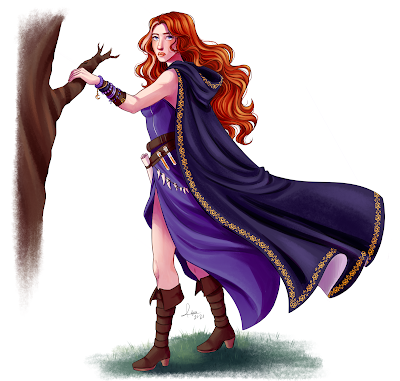 Larina by Beatriz Sanguino
Larina by Beatriz SanguinoAgain, I'm surprised I haven't posted something like this already. Given that I talked
about AD&D 2nd Edition earlier today, I thought this might be a good time to discuss the different witches from the AD&D 2nd Ed era.
I have talked in the past about how the AD&D 2nd edition era was a good time for all sorts of witch classes. By my count, there were at least four official classes from TSR (and later WotC) for AD&D 2nd Ed, and quite a few unofficial ones.
I have compared a few witch classes with each other at varying levels of detail over the years and will likely do it more when I take my deep dive into the Forgotten Realms for AD&D 2nd Ed. But looking back, I see I never taken the time to compare the AD&D Second classes to each other. The closest I have come was comparing two AD&D 2nd Characters to each other, Nida and Sinéad, and Sinéad is no longer even a proper witch.
One day, I'll do more, but I want to look at one official witch and two unofficial ones for today. I think I'll save Nida when it comes time to discuss the other official witches. Plus, using Larina here is much more appropriate.
As I mentioned earlier today, AD&D 2nd Edition can be seen as an extension or continuation of the AD&D 1st Edition line. The games are very compatible. So, my characters often moved from 1st to 2nd Edition without so much as getting a new sheet. Larina here is no exception. She began in 1986 with AD&D 1st Ed and moved to AD&D 2nd Ed in 1989 without a blink. But I did make new sheets for her eventually.
Let's go back a bit before AD&D 2nd edition came out. Back in July 1986, I created a witch character, Larina, to test some ideas I had about doing witches in (A)D&D. When Dragon Magazine came out in October of 1986 I started using that. But all the while, I am collecting my notes and ideas. Moving forward to 1989, AD&D 2nd Edition was released. There were a lot of new ideas in that and I was looking forward to trying out my collected notes. One set of notes became my Sun Priest kit for Clerics, another became a pile of notes for the Healer, another the Necromancer/Death Mage, but the largest would become the Witch. It would be almost 10 years before it would see publication but it did and Larina was a central figure in that work.
In those 10 years, there was a lot of writing and playtesting.
While I kept my Dragon #114/AD&D1st ed witch version of her, I created a parallel version using my new witch rules. This version was supposed to be the same person, just with a different set of rules to govern her. While that happened, two other witch classes were published to help me make other choices. I also set her up for these rules and played all three (or four, really) versions to see how she worked in different situations. So, if you have ever wondered if I have run out of things to say about witches or even this witch in particular, the answer is no, I have spent more hours with her than any other character I have.
So I would like to present her for AD&D Second Edition, but three different witch classes.
 Larina Nix for AD&D 2nd Edition
Larina Nix for AD&D 2nd EditionThis version(s) of Larina is just the continuation of her AD&D 1st Edition incarnation.
Base Stats (same for all versions).
Larina Nix
Human Witch, Lawful Neutral
Strength: 9
Dexterity: 17
Constitution: 16
Intelligence: 18
Wisdom: 18
Charisma: 18
Movement: 12
AC: 1
HP: 86
Weapons
Dagger, Staff
Defenses: Bracers of Defense (AC 1)
Languages: Common, Alignment, Elven, Dwarven, Dragon, Goblin, Orc, Sylvan
Ancient Languages: Primordial, Abyssal, Infernal
So, in this version, her dex and con were raised by some magic.
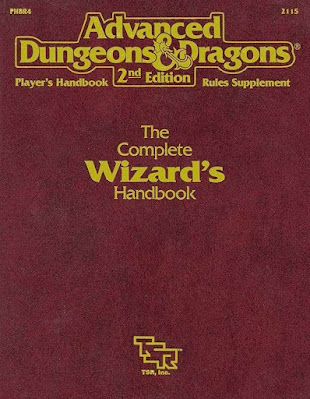 The Complete Wizard's Handbook
The Complete Wizard's Handbook
Class: Wizard
Kit: Witch
Level: 15
Saving Throws (Base)
Paralyze/Poison/Death: 11
Rod, Staff, Wand: 7
Petrify/Polymorph: 9
Breath Weapon: 11
Magic: 11
THAC0: 16
Proficiencies: Ancient History, Astrology (2), Herbalism, Reading/Writing (4), Religion (2), Spellcraft (4), Animal Handling, Artistic.
Weapons: Dagger, Staff
Secondary Skill: Scribe
Powers
3rd level: Familiar
5th level: Brew Calmative
7th level: Brew Poison
9th level: Beguile
11th level: Brew Flying Ointment
13th level: Witch's Cure
Spells
1st level: Burning Hands, Charm Person, Comprehend Languages, Copy, Chromatic Orb
2nd level: Blindness, ESP, Tasha's Hideous Uncontrollable Laughter, Knock, Ice Knife
3rd level: Clairvoyance, Hold Person, Hovering Skull, Iron Mind, Pain Touch
4th level: Dimension Door, Fear, Magic Mirror, Remove Curse, Fire Aura
5th level: Advanced Illusion, Cone of Cold, Feeblemind, Telekinesis, Shadow Door
6th level: Eyebite, Dragon Scales
7th level: Shadow Walk
--
 Mayfair Role-aids: Witches
Mayfair Role-aids: Witches
Class: Witch / Wizard
Tradition: Classical
Level: 15 / 1
Saving Throws (Base)
Paralyze/Poison/Death: 13
Rod, Staff, Wand: 9
Petrify/Polymorph: 11
Breath Weapon: 13
Magic: 10
THAC0: 16
Proficiencies: Ancient History, Astrology (2), Herbalism, Reading/Writing (4), Religion (2), Spellcraft (4), Animal Handling, Artistic.
Weapons: Dagger, Staff
Secondary Skill: Scribe
Powers
Herbalism
Spells
1st level: Feather Fall, Identify, Read Magic, Sleep, Chill Touch, Protection from Evil, Color Spray
2nd level: Flaming Sphere, Locate Object, Forget, Ray of Enfeeblement, Strength
3rd level: Cure Light Wounds, Dispel Magic, Clairvoyance, Delude, Mystery Script
4th level: Call Lightning, Fear, Fire Shield, Magic Mirror, Wall of Fire
5th level: Feeblemind, Shadow Magic, Dream, FAlse Vision
6th level: Geas, Legend Lore, True Seeing
7th level: Shadow Walk
--
 The Complete Netbook of Witches & Warlocks
The Complete Netbook of Witches & Warlocks
Class: Witch (Priest Sub-class)
Level: 15
Saving Throws (Base)
Paralyze/Poison/Death: 5
Rod, Staff, Wand: 9
Petrify/Polymorph: 8
Breath Weapon: 11
Magic: 10
THAC0: 12
Proficiencies: Ancient History, Astrology (2), Herbalism, Reading/Writing (4), Religion (2), Spellcraft (4), Animal Handling, Artistic.
Weapons: Dagger, Staff
Secondary Skill: Scribe
Powers
1st: Turn Undead
3rd level: Read/Detect Magic
6th level: Chill Touch
9th level: Candle Magic
12th level: Immune to Fear
15th level: Fascination
11th level: Brew Flying Ointment
13th level: Witch's Cure
Spells
1st level: Create Fire, Katarine's Dart, Witch Light, Dowse, Wall of Darkness, Painful Wounds
2nd level: Burning Wind, Acquire Witch's Familiar, Blackfire, Dance Trantra, Minor Hex, Pain Armor, Protection vs. Elementals
3rd level: Lesser Strengthing Rite, Beguile III, Astral Sense, Lethe, Witch Writing, Rite of Remote Seeing
4th level: Spirit Dagger, Cloak of Shifting Shadows, Broom, Cleanse, Card Reading, Grandmother's Shawl, Middle Banishing Rite
5th level: Rite of Magical Resistance, Starflare, Dolor, Bull of Heaven
6th level: Anchoring Rite, Greater Banishing Rite, Kiss of Life
7th level: Demon Trap
--
The biggest differences are in the powers and the spells.
I kept her HP the same in all three cases to keep combat a fixed variable, the same with her weapons and non-weapon proficiencies.
The Wizard's Handbook from TSR strikes a good balance of powers and spells. The Mayfair Role-aids Witches book has some great spells. Of course I am fond of my own Complete Netbook of Witches & Warlocks. Of course, after 25 years, there are things I would do differently now.
Playing All Three
Playing all three in a game was interesting but also a lot of fun. I'd generally alternate between them, choosing which one to use in combat beforehand so I could measure the utility of the spells. So when I say I have played her more than any other character, I really mean it. I kept her "real" sheets as notes in MS Word 2.0/95/97 to make easy changes to them as I played with my CNoW&W one as the "official" character sheet.
This also gave me the idea that all her incarnations are aware of each other. It has nothing to do with any of the game mechanics I have written, but it is aa fun little role-playing exercise.
In 1999, on October 31st, I was sitting in the hospital. My wife had just had our first baby, Liam, and I had my laptop. Just after midnight, I released my "The Complete Netbook of Witches & Warlocks" for free on the web. Larina was featured in that book as a 6-year-old who discovered she was a witch.
All the playtesting would then lead to my "The Witch: A sourcebook for Basic Edition fantasy games" released exactly 14 years later. It would also lead to my 3rd Edition books on witches, but I'll talk about them next week.
 TSR 1983 Product Catalog
TSR 1983 Product Catalog


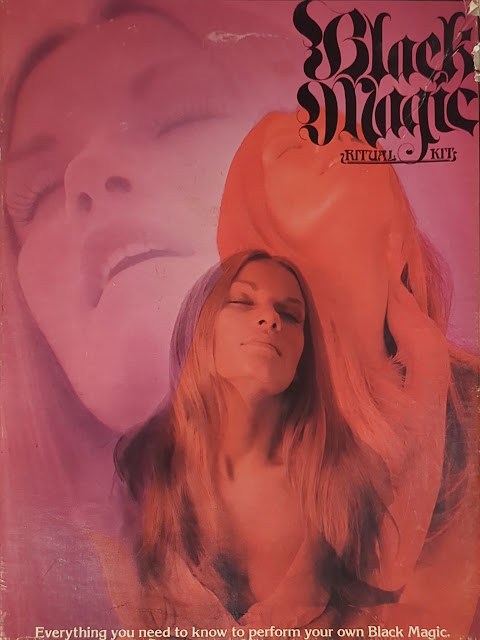




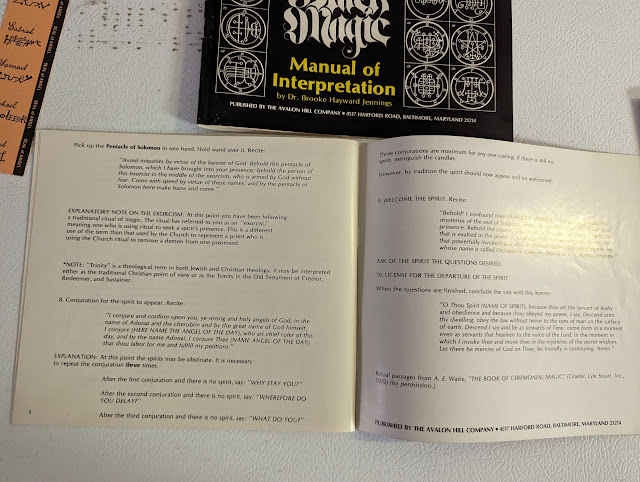





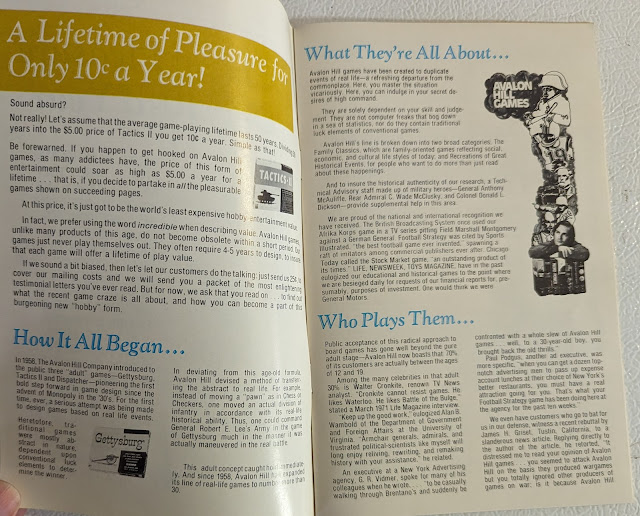









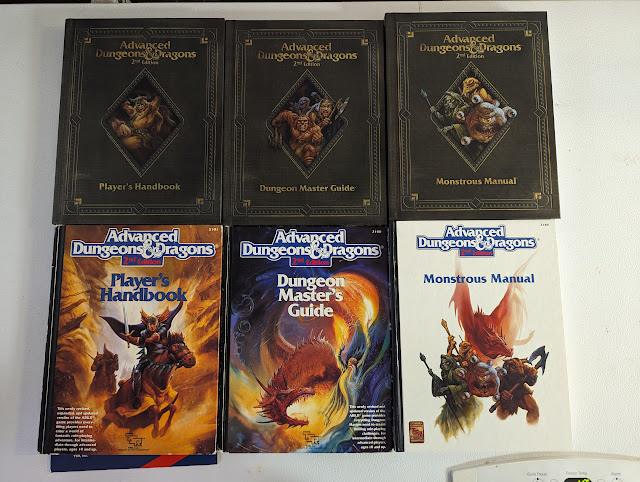

















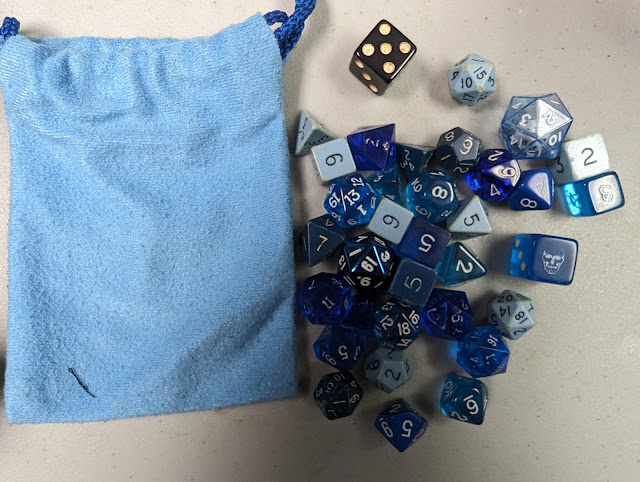



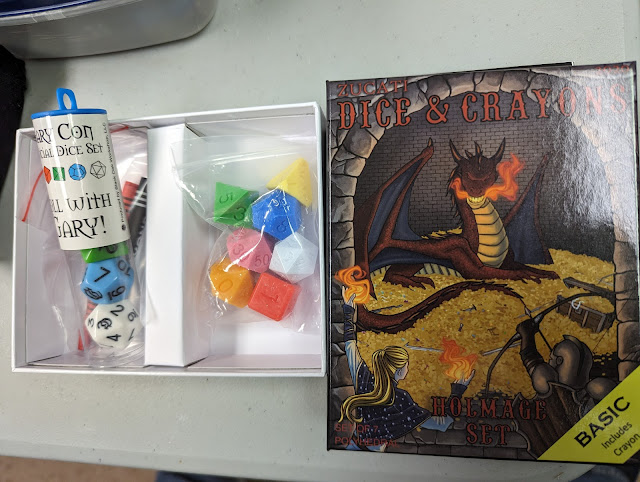


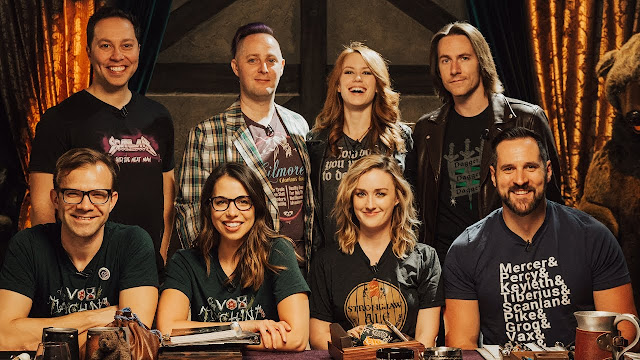


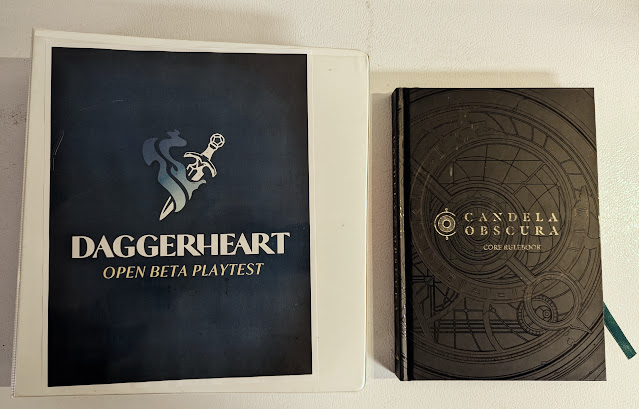





.jpg)





